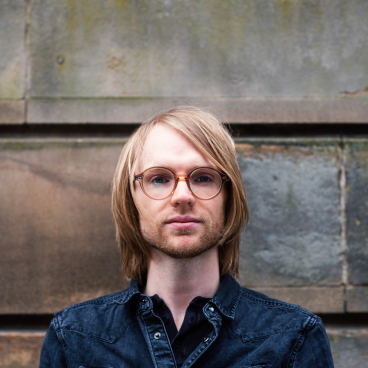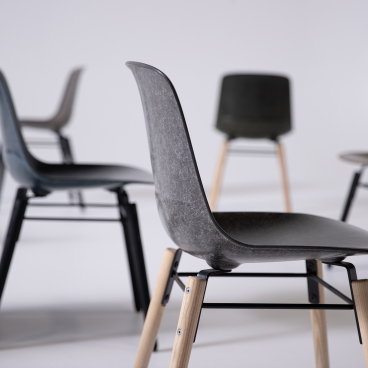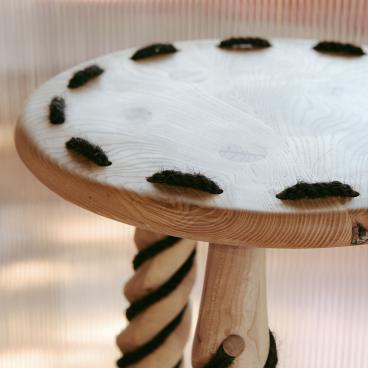Meet the maker: Expressive furniture and object maker, Jan Hendzel.
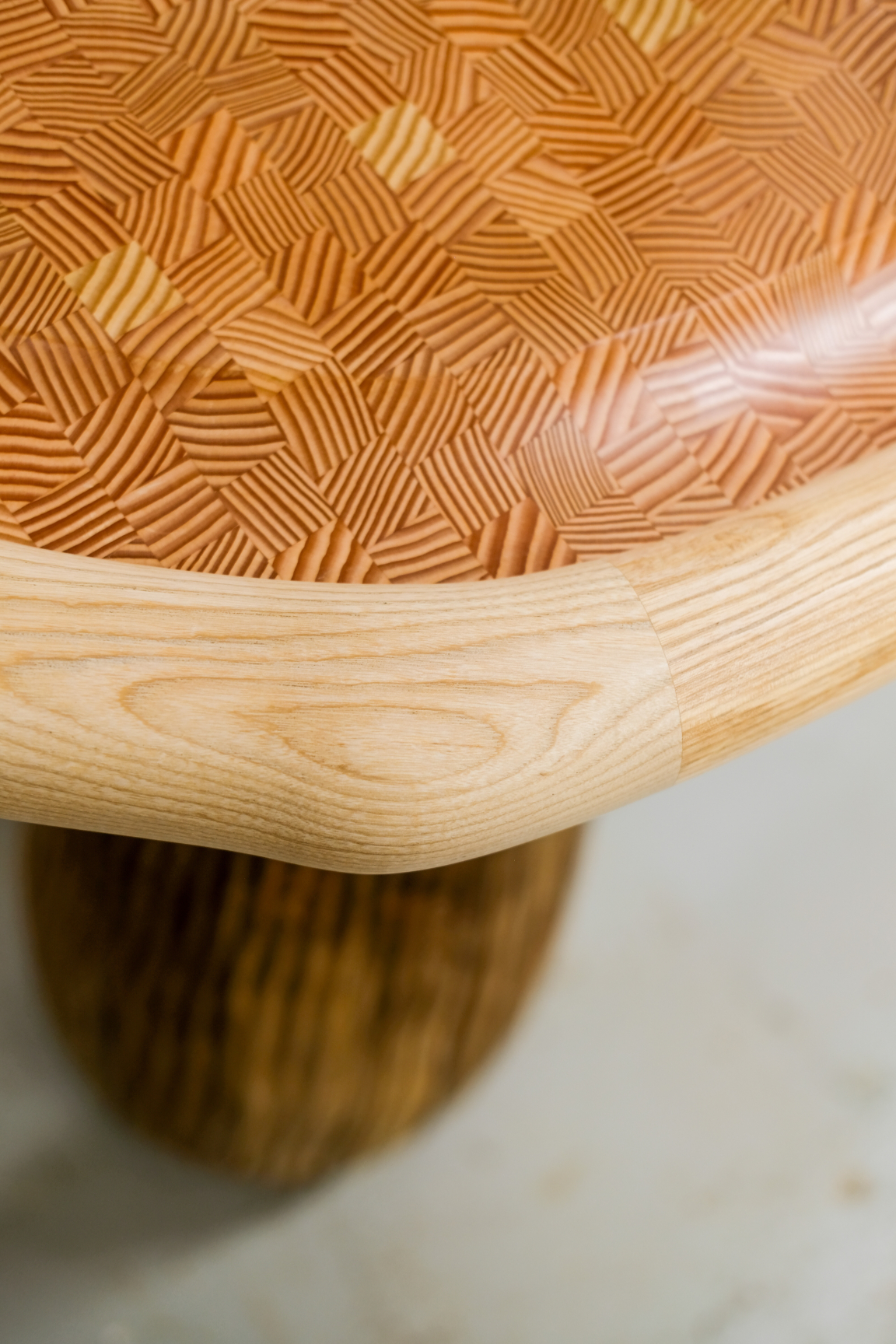
‘Artist Unknown’ by Jan Hendzel at Harewood Biennial. Photography credits: Thomas Wheller
Marrying traditional carpentry methods with technology driven techniques, Jan Hendzel crafts - as he describes - “the greatest natural material abundant on earth” into truly original furniture collections and one-of-a-kind objects.
A legitimate master of his material, Jan Hendzel and his studio, have developed a distinct design language of expressive forms, tactile materiality, and technical intricacy to transform UK-sourced timbers into narrative-rich pieces of carpentry.
Following on from our visit to the Harewood Biennial, Create / Elevate exhibition, we were inspired to make contact with Jan to delve further into the creative process behind Artist Unknown - two deeply sculptural pieces of furniture for Harewood House’s yellow drawing room.
Unpicking Harewood’s complex past of wealth, power and trade, Artist Unknown celebrates the anonymous artisans from Africa and the UK behind a number of objects in the Harewood archives. Crafting a console table and mirror using British grown timbers, such as Douglas Fir and Olive Ash, the studio challenges the Georgian period’s perspective of luxury materials by using UK abundant species, rather than exotic varieties.
Here, you’ll read about Jan’s first interactions with wood, and projects such as Pirouette, exhibited at this year’s Material Matters Fair. The studio’s foray into interior design, through creating two restorative, nature focused suites for the Grade II listed Town Hall Hotel in Bethnal Green. And Jan’s recently released furniture collection, Drumlin – inspired by the rugged Irish landscape.
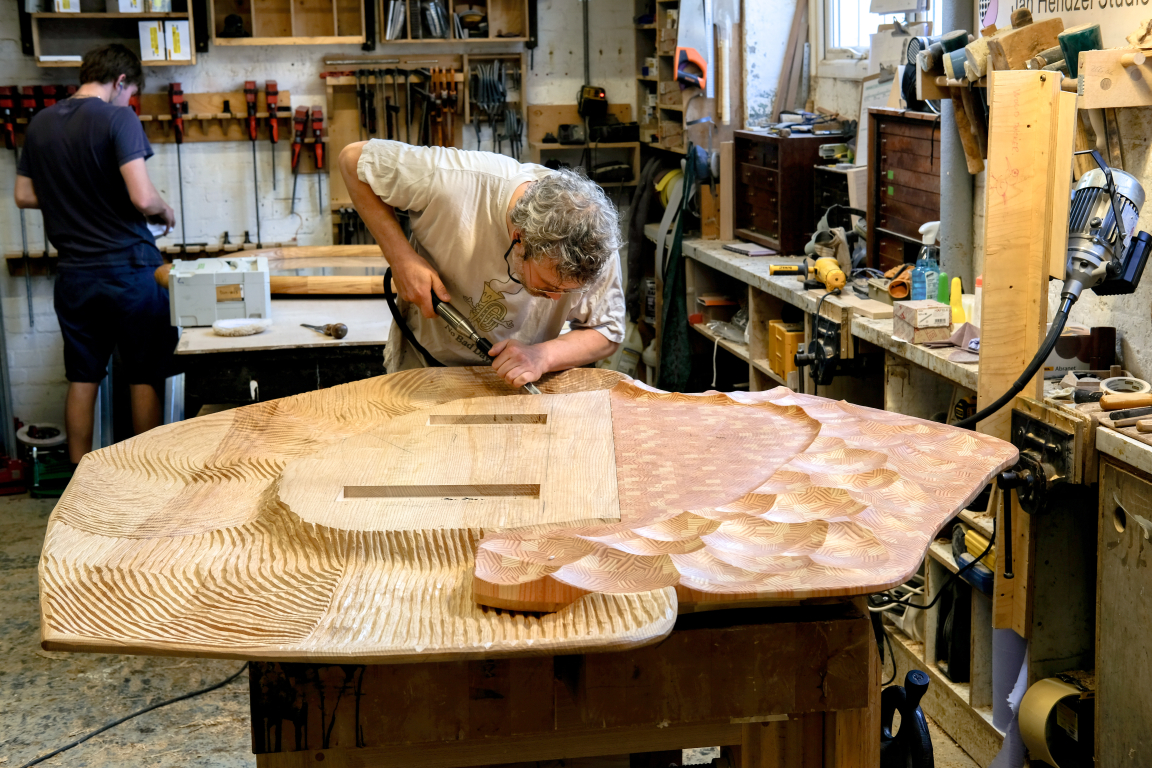
Photography credits: Thomas Wheller
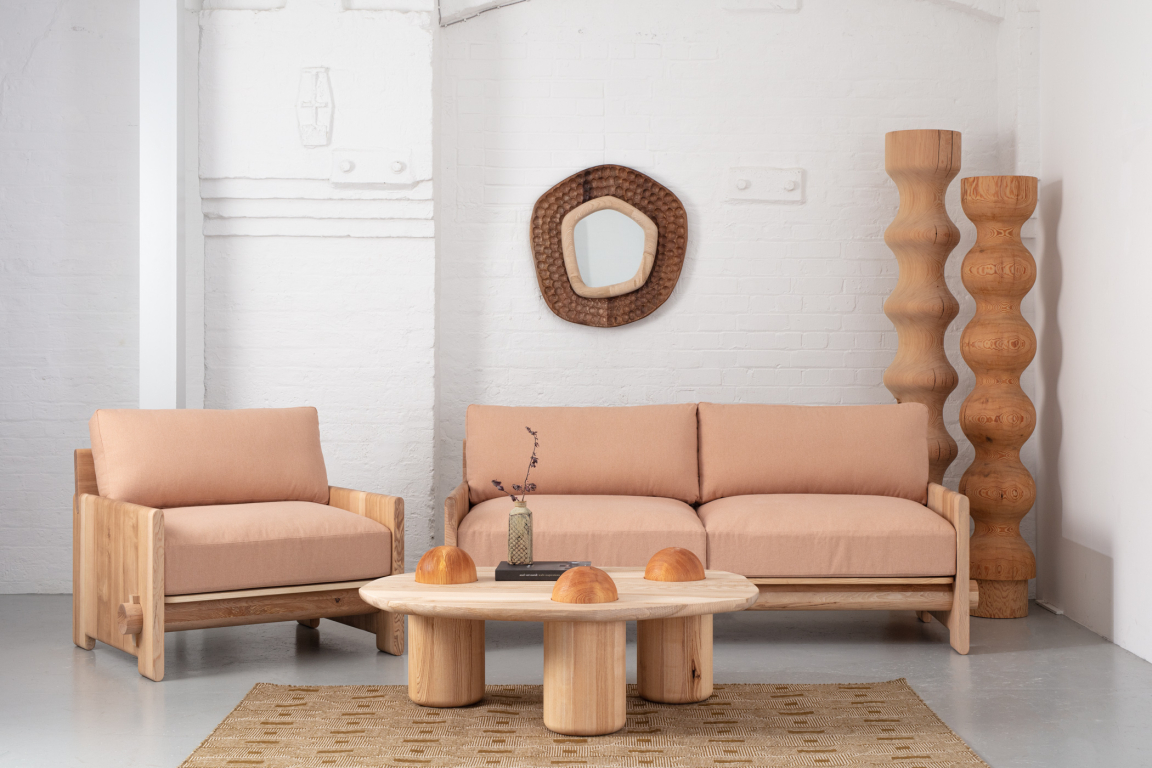
Photography credits: Fergus Coyle
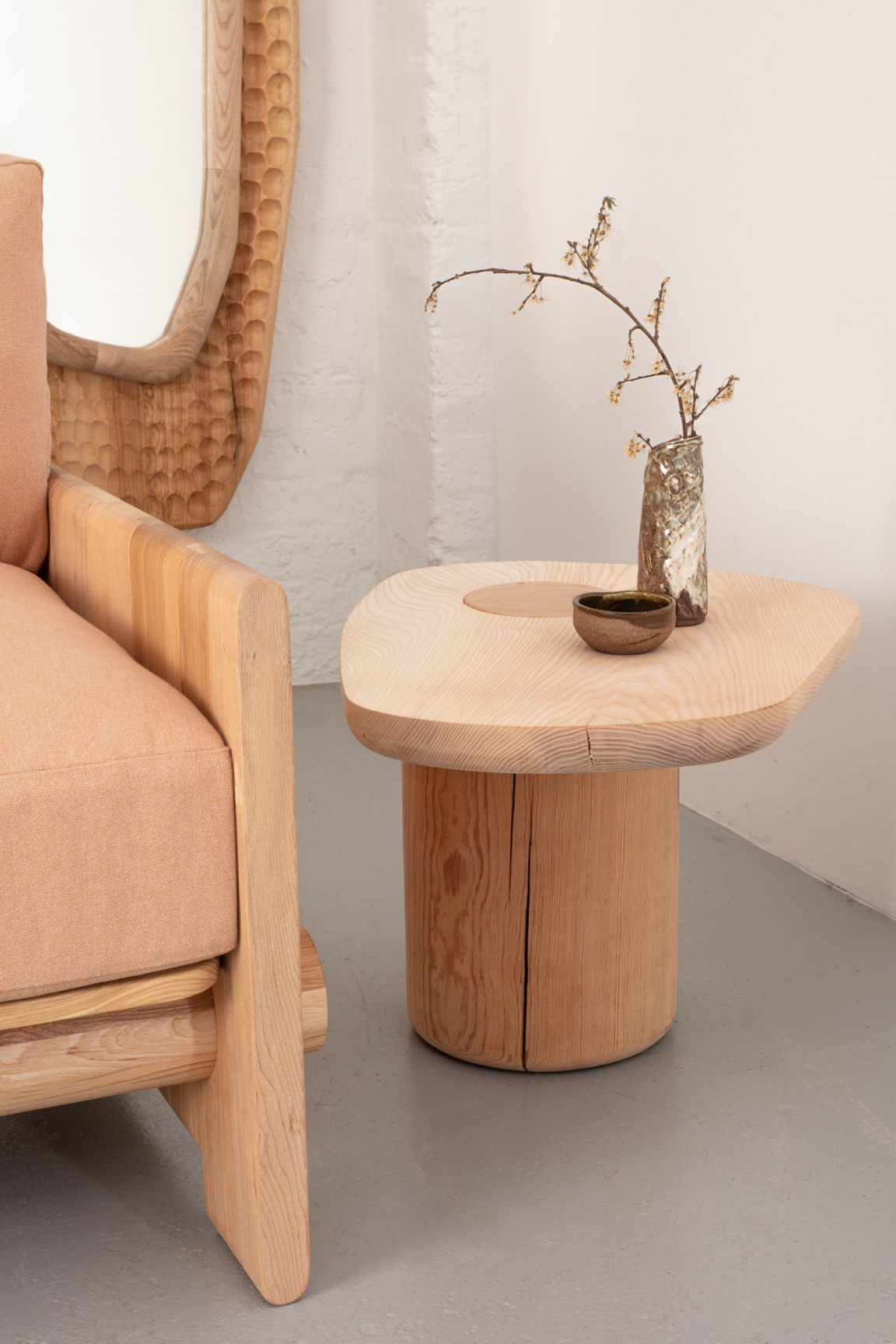
Photography credits: Fergus Coyle
Firstly, can you tell us how you got started?
“I got started in a pattern making engineering workshop when I was 15. I did an apprenticeship, spending several years learning how to create complex ‘patterns’ out of timbers and tooling resins for the foundry. I was fortunate that I learnt an incredible array of hand tooling skills, as well as working manual milling machines.
“This gave me an innate knowledge base into working precisely, often working in reverse from components with little or no drawings! Mastering how to create complex organic forms with very specific requirements for industry.
“Having been made redundant, I went on to study design at Central Saint Martins, where I could then merge a wealth of complex making knowledge with an understanding of the design process. I moved to London and started a workshop just as I was completing my first year of a BA. That was 18 years ago, and I have been running a design workshop ever since.”
Where do you think your love for wood stems from?
“Timber has been part of my life since the very early years of my life. My dad was a pattern maker and my Dziadek (grandfather) was in the construction industry, so between them both I was going to workshops and back garden sheds from an early age. I was seeing and understanding the processes involved in working with timber since I was young.
“Working with timber on a daily basis, which for me is one of greatest, if not the greatest, natural material abundant on earth, is a constant learning process. Its environmental credentials and infinite ability to work into numerous forms keeps me excited and engaged and allows me to work with other timber experts from across the globe.
“Developing complex projects in timber offers the constant opportunities to expand on the huge knowledge available. Big love for timber!”
What drives the expressive, sculptural qualities that your work is renowned for?
“Coming from a background that required precision to deliver the end product, we would often inadvertently create ‘beautiful’ patterns. Although not the intended outcome, it always resonated with me there was something extra at play outside the intended function. I now understand this as sculptural qualities!
“I'm a self-taught furniture maker. I love what furniture offers, essentially if you can mark out accurately, cut to line and know when and what material to remove, you can make furniture. Adding into the mix a sculptural offering allows for a more challenging reward.”
How important is movement between digital and handcraft in your studio?
“Applying traditional and digital methods of working are for me what makes up a modern workshop. It’s how we celebrate the craft of design and woodworking. I am not honest to any one period of time in terms of reference, and see plenty of opportunity in working timber to manipulate traditional forms and intended uses, often subverting traditional techniques to fit my project requirement with a digital update.
“Cross pollination between traditional form and technique merged with digital technology allows for something new or not previously thought possible.”
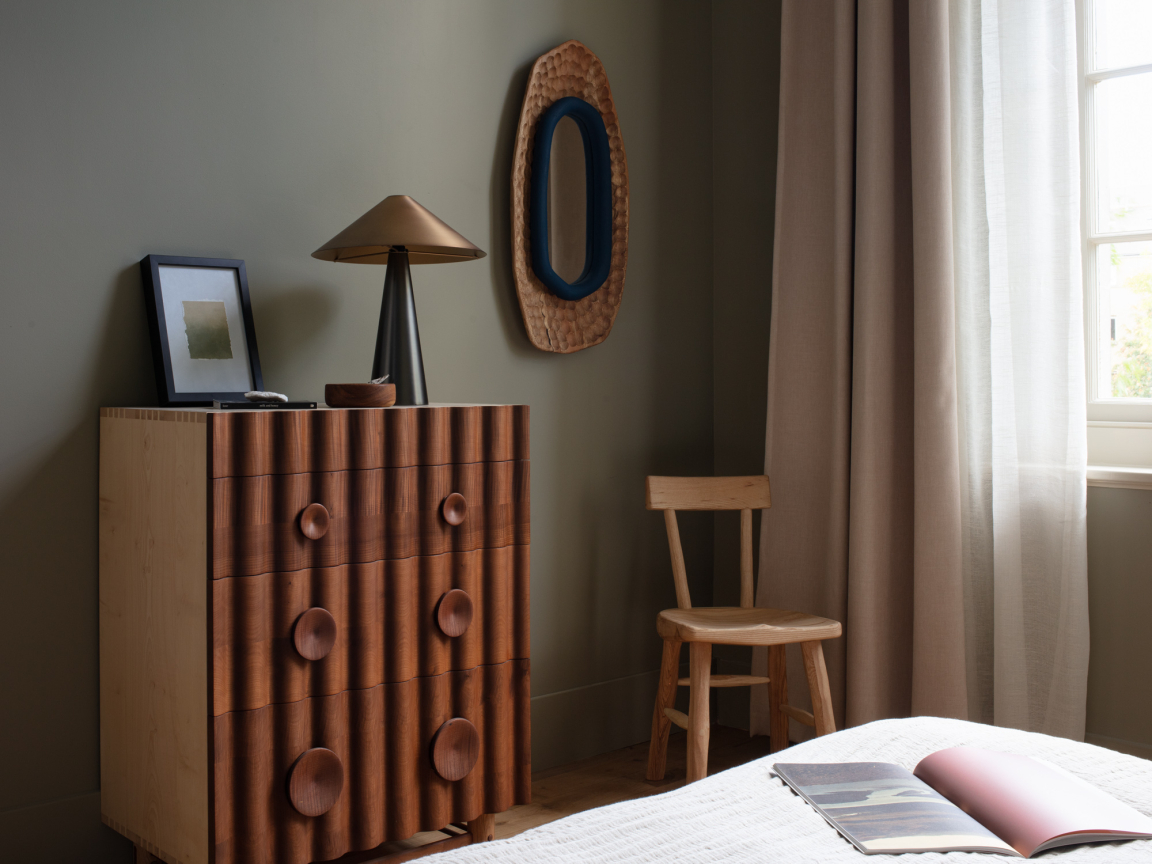
Bethnal Green Hotel. Photography credits: Fergus Coyle
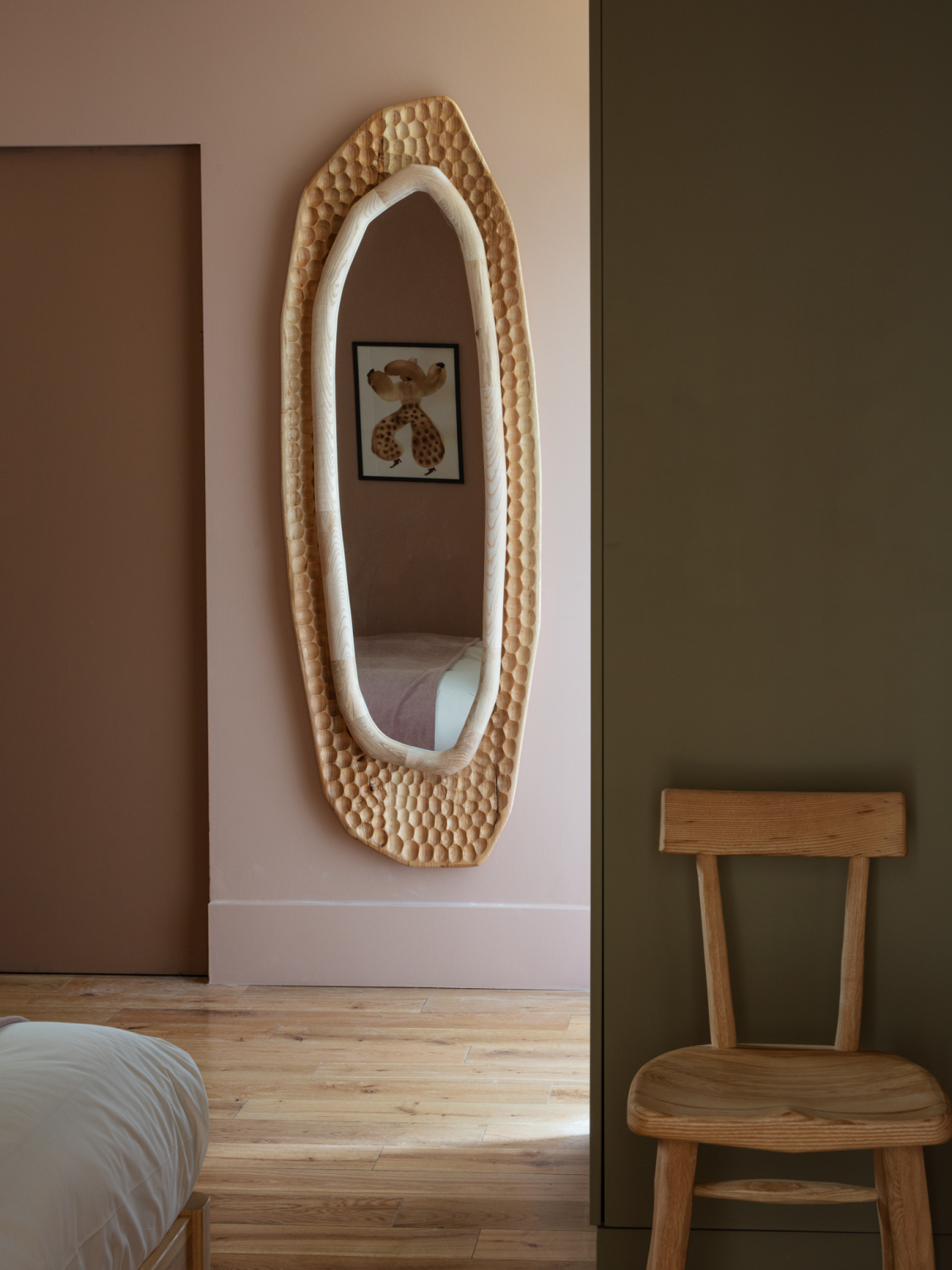
Bethnal Green Hotel. Photography credits: Fergus Coyle
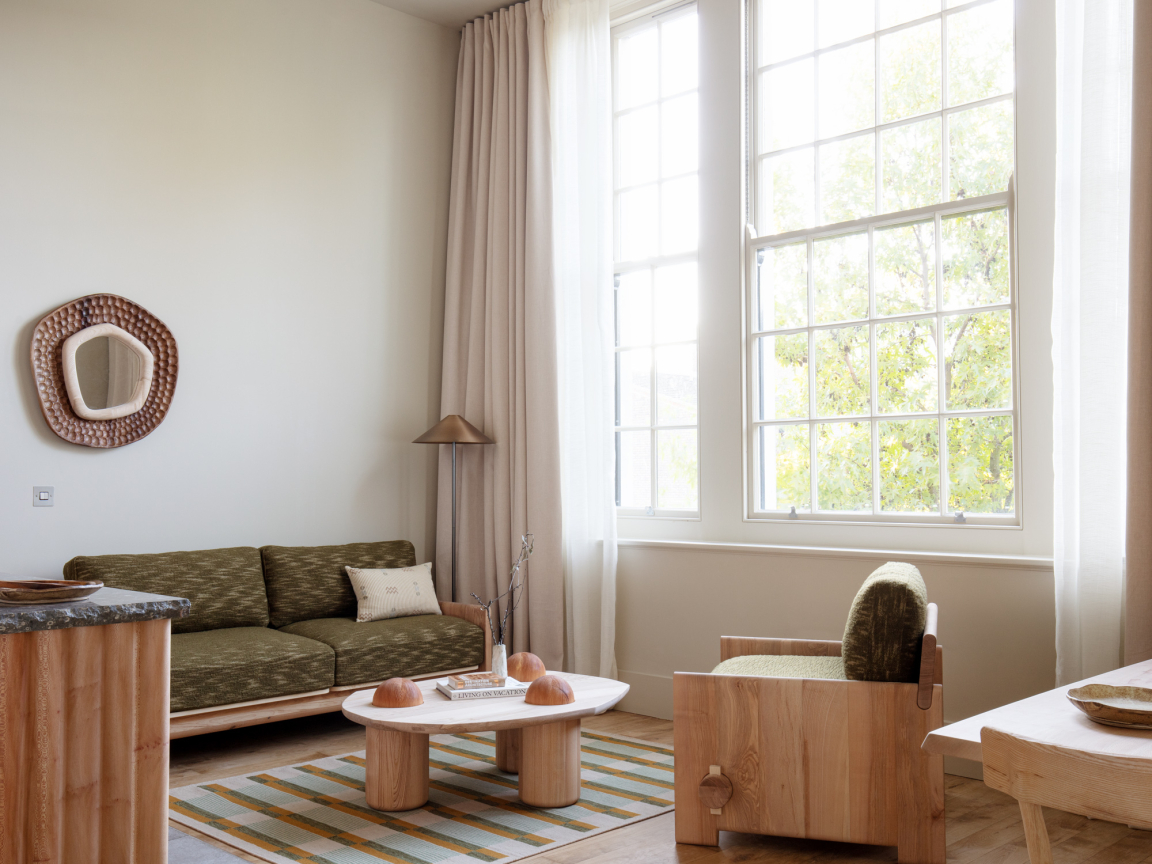
Bethnal Green Hotel. Photography credits: Fergus Coyle
What does your team look like today?
“Our studio has built a reputation on exceptional quality and having “fun” with timber-based projects. We have built something of a specialism by creating out of the ordinary pieces which can be collections, collaborations or through commissions.
“For all of this to run smoothly, we have a production manager, designers and a variety of craftspeople who make up the Jan Hendzel team.”
We were lucky to view ‘Artist Unknown’ at the Harewood Biennial. Can you tell us more about the project?
“Underpinning our project ‘Artist Unknown’ is an acknowledgement of the complicated histories of wealth, trade and power of Harewood House, manifested in the physical embodiment of the building, collections and the exhibited works.
“For 2024’s Harewood Biennial: Create/elevate, the installation seeks to open a dialogue between two boldly crafted new wooden pieces and existing objects from Harewood’s collection.
“We produced a grand monolithic console table and a meticulously hand-carved large-scale wall mirror, each crafted in a combination of British Grown Douglas fir and Olive ash. Both pieces represent the studio's distinct design language of sculptural simplicity, tactile materiality and technical intricacy.
“The work speaks to the future of craft through a dedication to using British timber and preserving of local materials, and looks to history by using joinery methods, carving techniques and finishes inspired by past master artisans both in the UK and West Africa.
“They will sit with existing objects from Harewood’s collection made by unknown Indigenous artists from Mali, Nigeria, Côte d’Ivoire and Sierra Leone, as well as original furniture made by anonymous craftspeople in Thomas Chippendale’s London workshop. The African sculptures in the installation are from the Harewood collection with interpretation texts by Lara Rose, PhD candidate, Leeds Beckett University.”
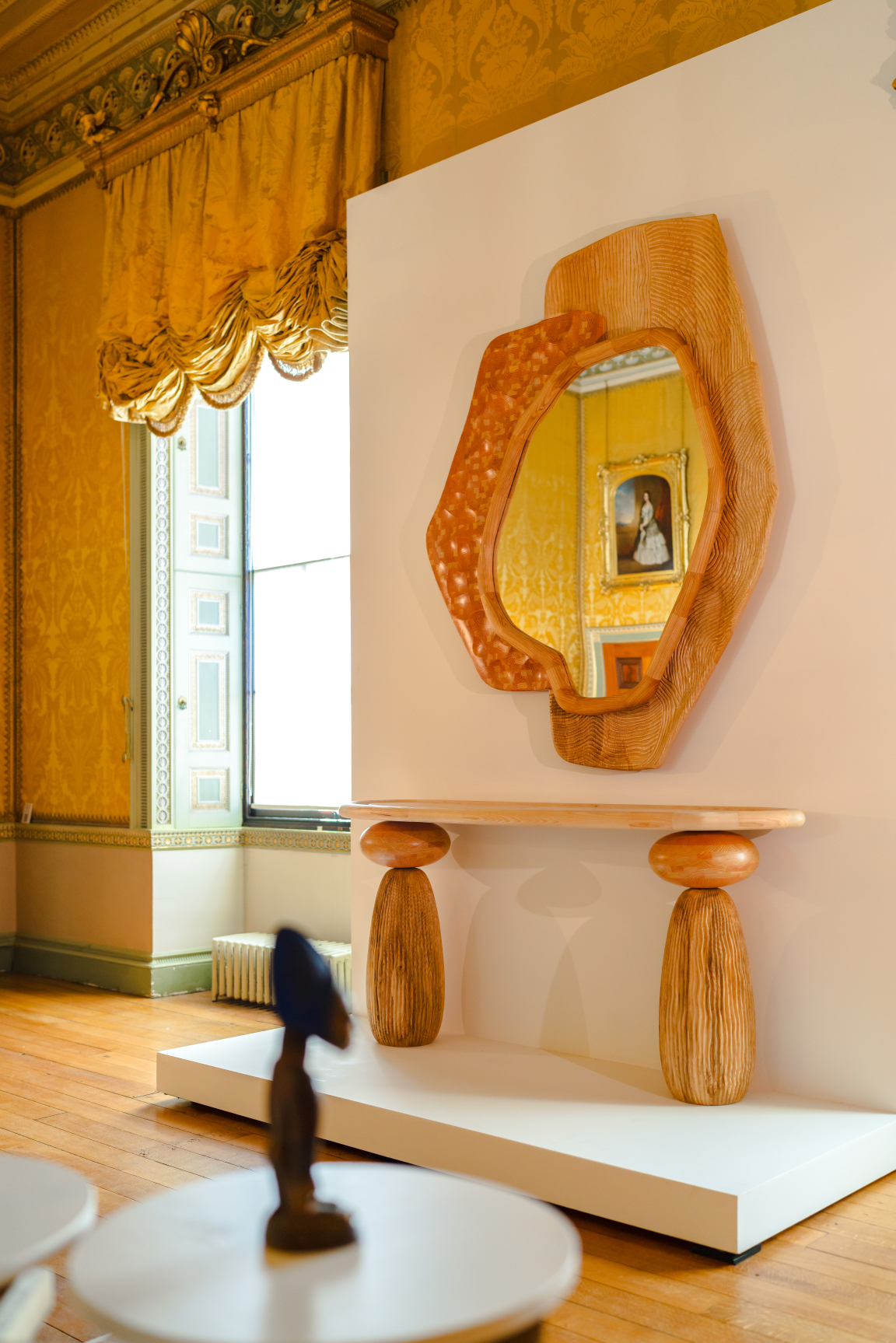
‘Artist Unknown’ by Jan Hendzel at Harewood Biennial. Photography credits: Drew Forsyth
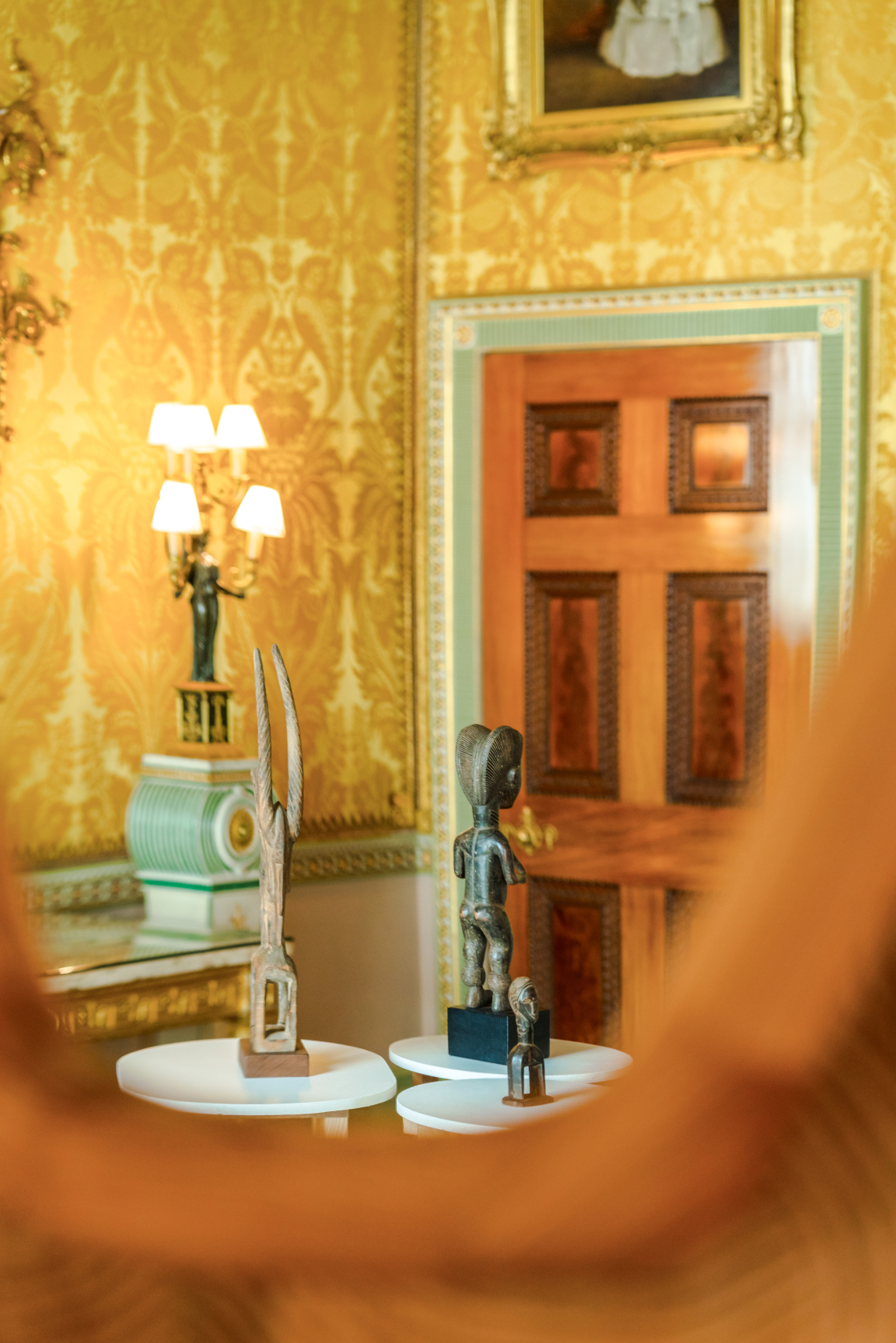
‘Artist Unknown’ by Jan Hendzel at Harewood Biennial. Photography credits: Drew Forsyth
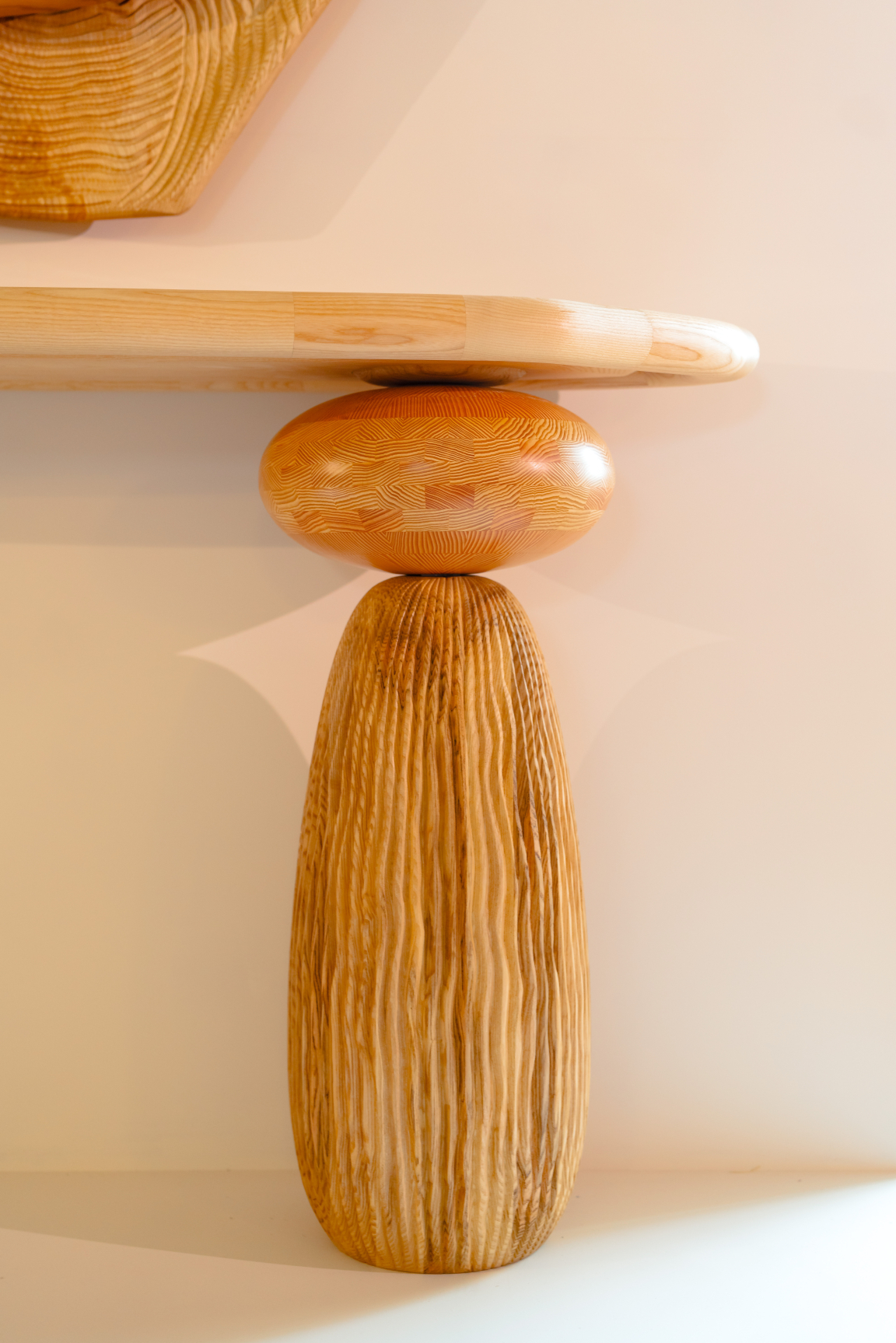
‘Artist Unknown’ by Jan Hendzel at Harewood Biennial. Photography credits: Drew Forsyth
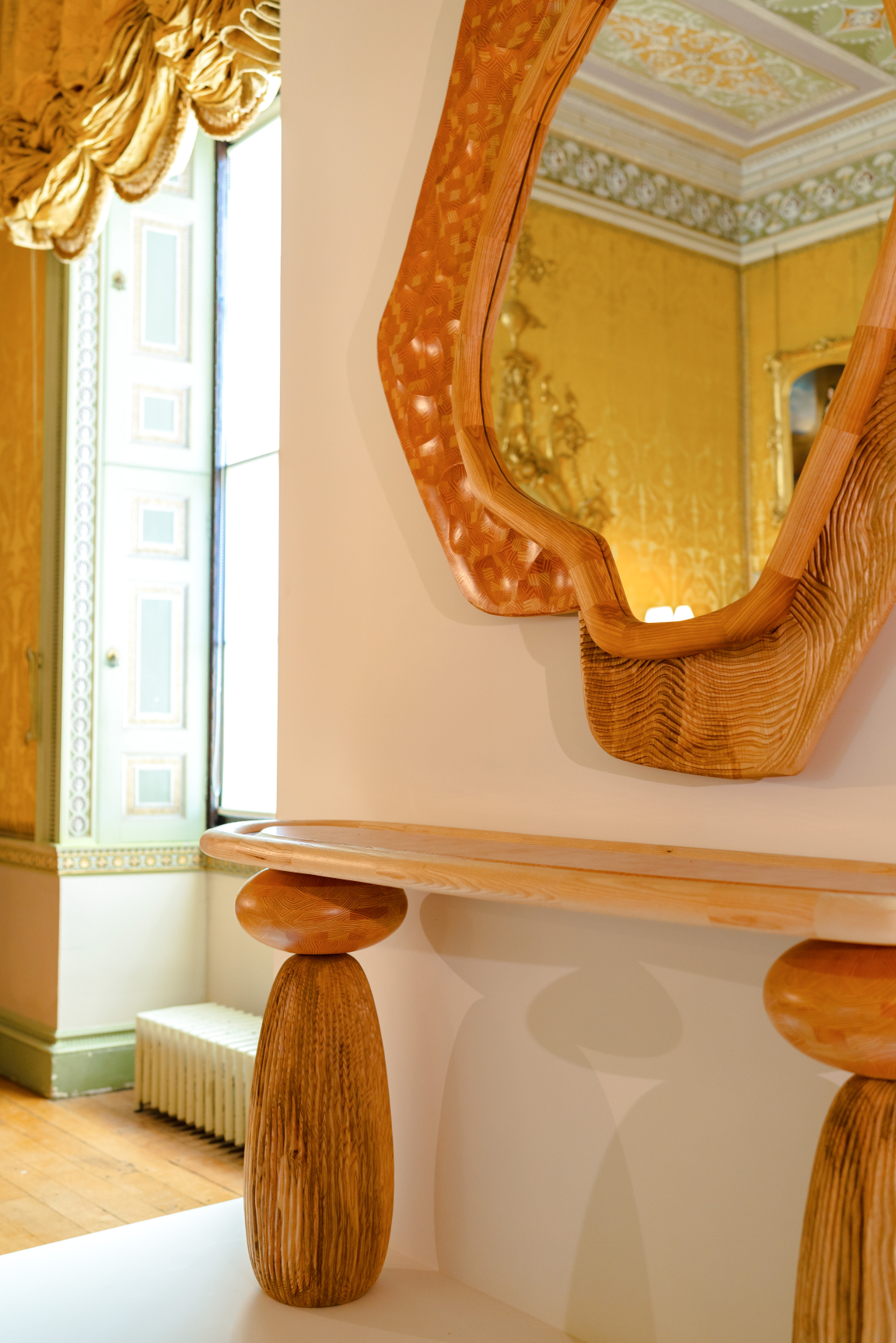
‘Artist Unknown’ by Jan Hendzel at Harewood Biennial. Photography credits: Drew Forsyth
The Gallions Reach mirror was one of your initial starting points for the project. What inspiration did you draw from Harewood’s heritage to inform ‘Artist Unknown’?
“Early on we understood we wanted to create a mirror to use in the yellow drawing room. Understanding Chippendale had numerous mirrors throughout that space, we felt it was the perfect accompaniment to add into the mirrored room, whilst focusing attention on the many unknown artists positioned on central pedestals. Reflecting on each other to create dialogue.
“Gallions Reach embodies a range of techniques we often use. We have taken the common language of adding texture to a decorative surface and applied it to our methods and styles of working, whether that be Neolithic stone carving, the ornate work of Grinling Gibbons, or the varied and foundational carving of previously enslaved lands.”
Can you talk us through the reasons behind using less utilised British timbers, such as British grown Ash and Douglas Fir?
“We wanted to give the perspective that through process, you can take a lesser used and known timber species, such as Ash and Douglas Fir, rather than luxury use timber in object design. Using this as a statement against the timber use of Thomas Chippendale, who used tropical species in his works to create the best ideas of luxury at the time - often taken from lands cleared to create plantations allowed for a large supply of exotic timbers, typically shipped back to England.
“We have featured Douglas Fir as a central component in both pieces, cutting and rotating sections of wood to exclusively show the incredible patterns created by the lighter summer growth and darker winter growth present in the end-grain. This labour-intensive, but visually arresting feature speaks to the luxury and ornate qualities often found in the work of Chippendale and of the Georgian period more generally.”
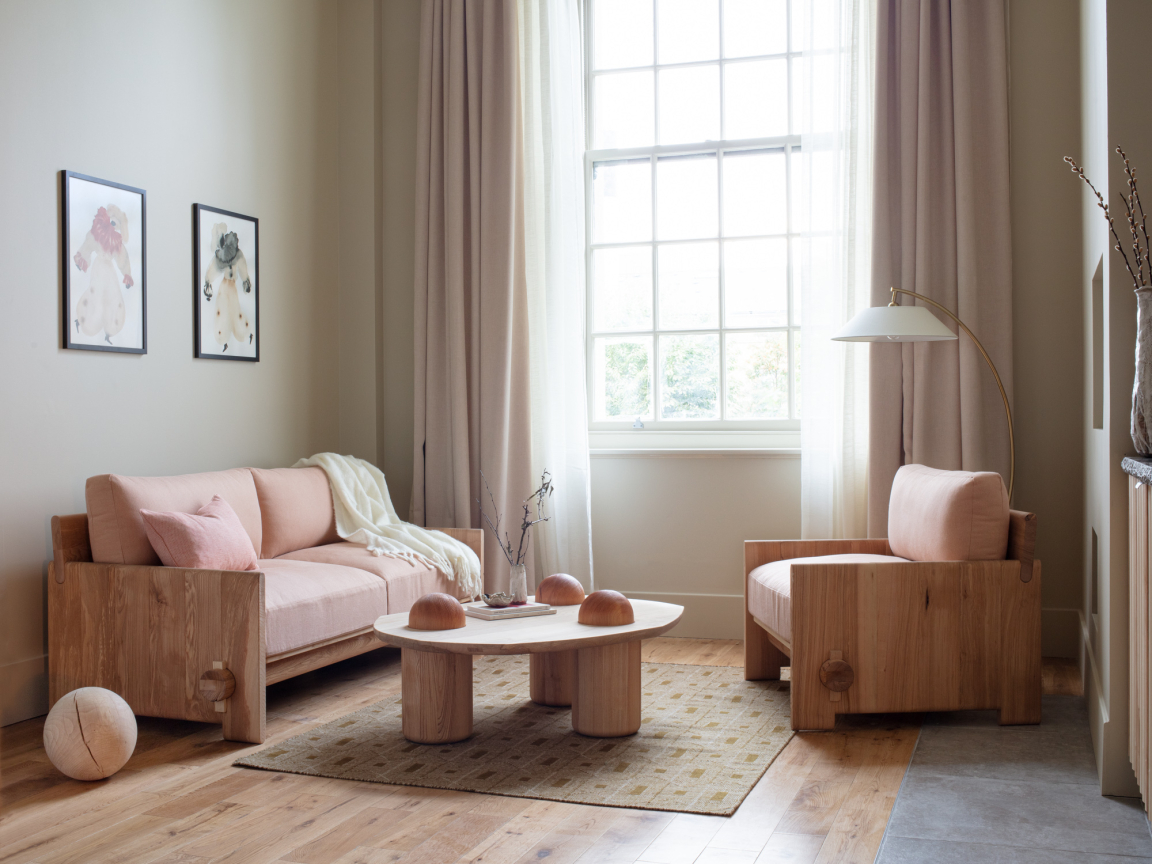
Bethnal Green Hotel. Photography credits: Fergus Coyle
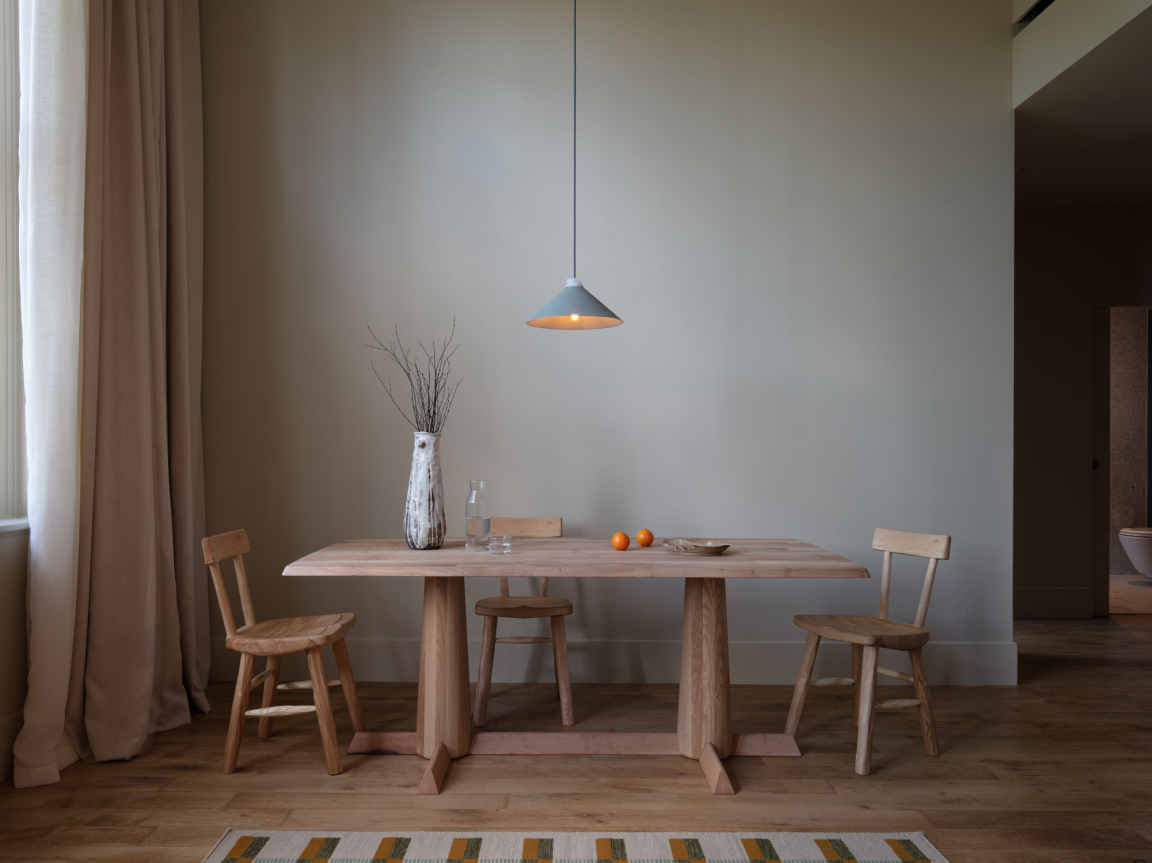
Bethnal Green Hotel. Photography credits: Fergus Coyle
And how do you go about sourcing the wood you use?
“We use a variety of suppliers and have an extensive network to call upon for our projects. In this instance, we were supplied by Geoff Tyler of Tyler Hardwoods. All timbers used are grown in Britain certified.”
What different techniques did you employ to achieve the magnificent tactile and sculptural qualities in the wood?
“Mixing the hand of the maker and the capabilities of CNC machining, we have explored how textures offer the viewer various points of dialogue, intrigue, and depth.
“The large ash mirror has a hand carved texture using a v point gouge, which has been channelled out across the undulating surface, catching light and casting shadows through its intricate maze of valleys and overhangs. As well as playing with sections of the Douglas Fir grain direction, we digitally carved a large, patterned surface offering moments for the lights to dance across the multiple large, scalloped surfaces.
“We also interpreted the ideas of a traditional fielded panel, often used in cabinet backs, and used this style to make the tabletop surface of our console table. The great thing about using the end grain is the ability to pick up a lustrous glossy polish, a nod to perceived ideas of luxury.”
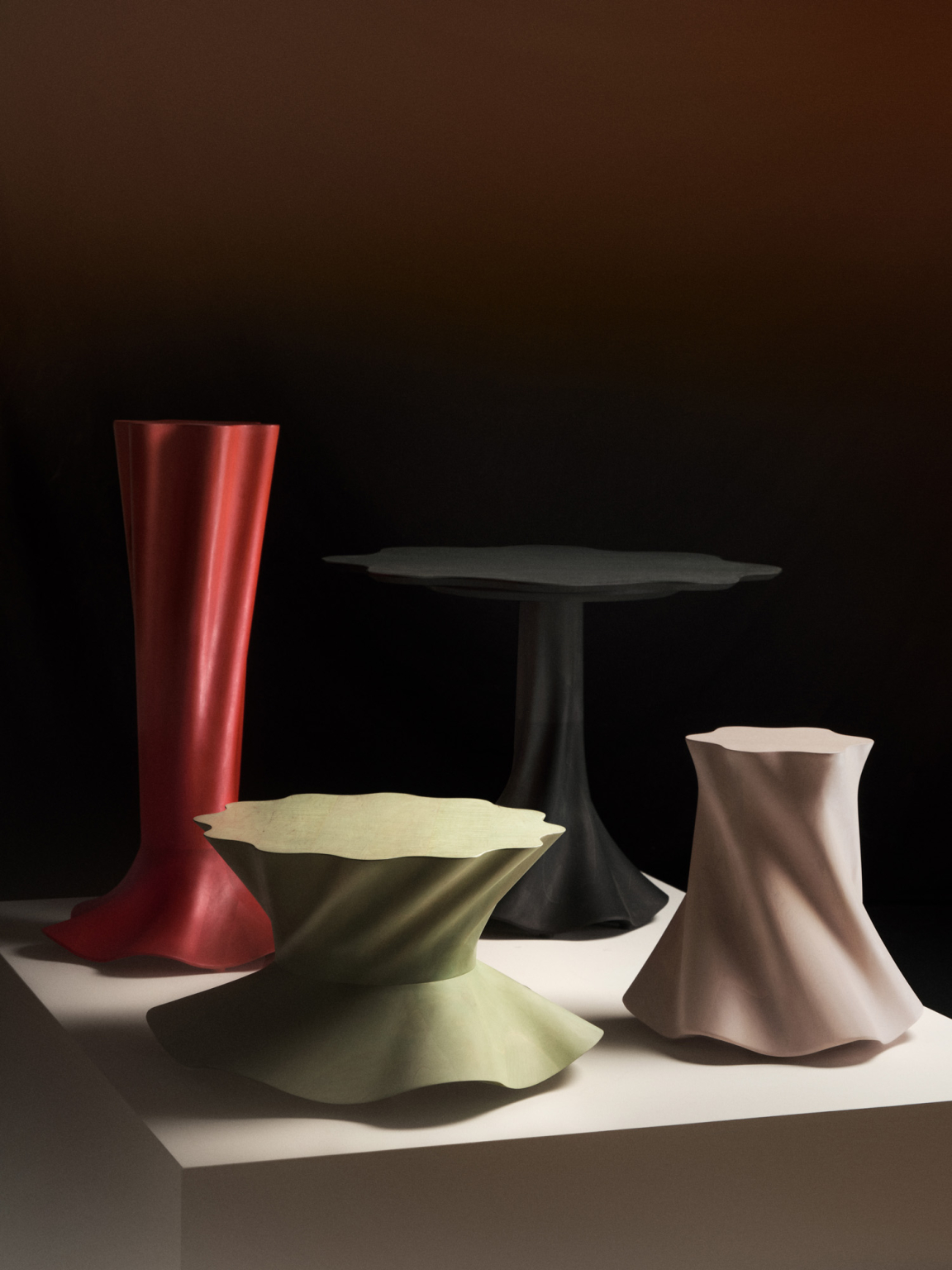
Pirouette. Photography credits Olly Mason.
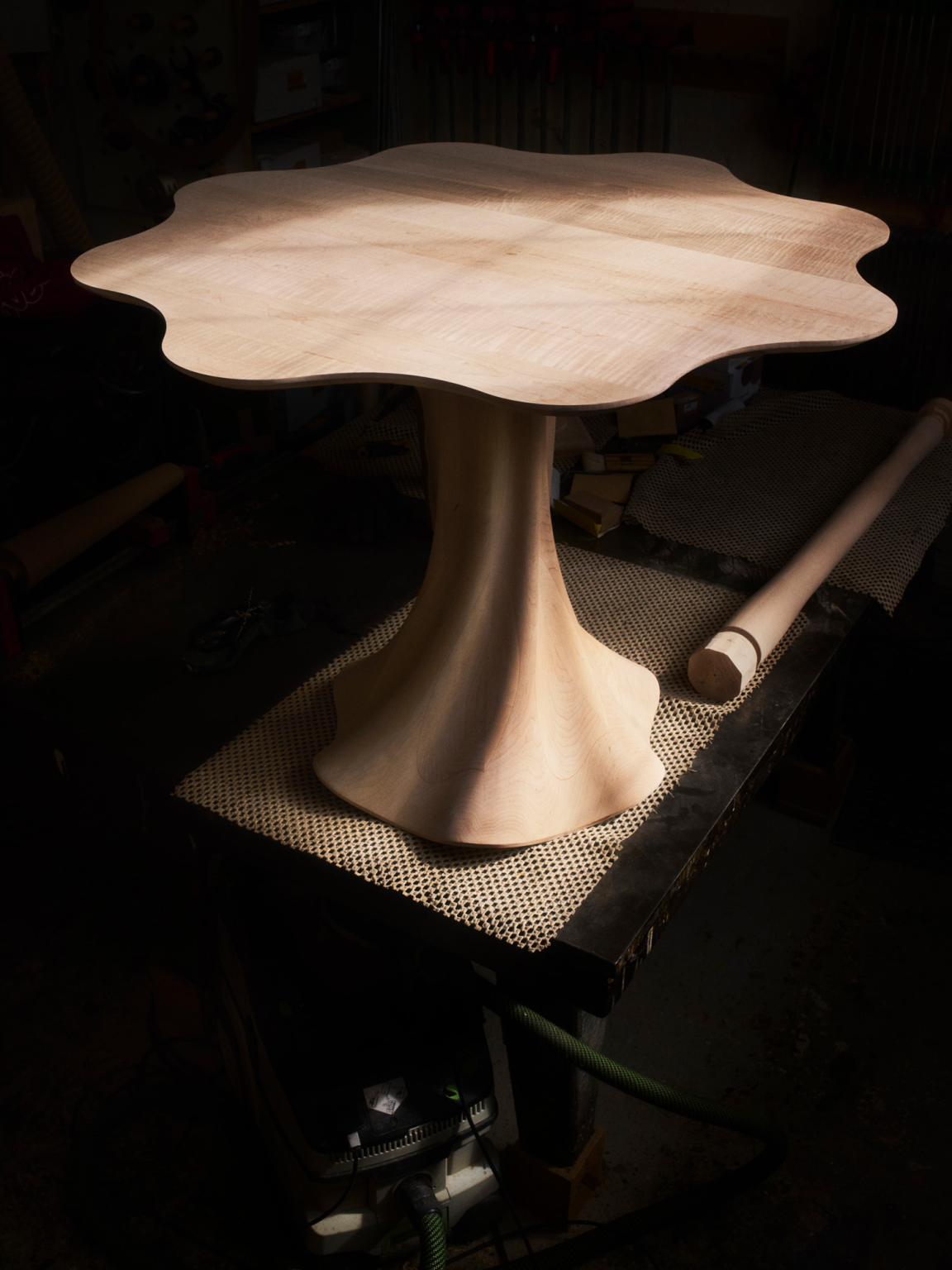
Pirouette. Photography credits: Tex Bishop
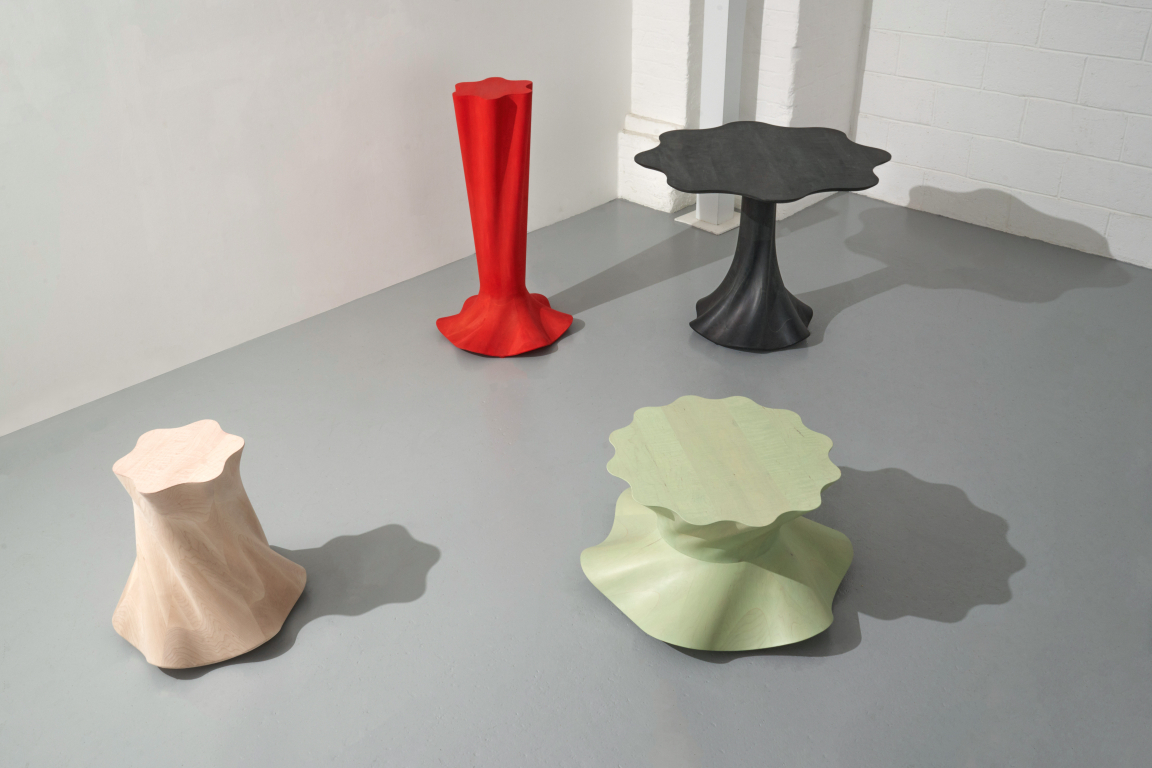
Pirouette. Photography by Jason Yates
In collaboration with Parti, Pirouette was exhibited at this year’s Material Matters show at LDF. Can you please give us a summary of this project, commenting on why materiality is key to the design concept?
“Pirouette was a collaborative project between Jan Hendzel Studio, Parti and AHEC (American Hardwood Council). We were tasked with developing the incredibly complex concept from Parti, showcasing flow, and capturing movement in hard and dense American Maple.
“Timber was the lead and for us it was to experiment and figure out how best to capture the essence of movement. Maple is a beautiful timber with very hardworking properties, an exciting element of the grain patterning is that it’s somewhat illustrative, which we used to our benefit as dancing patterns around the final forms. Understanding how to layer the timber so you are cutting through the outside of the tree or cutting from the centre out.
“The small, subtle, and rather painstaking detailing is what makes this project very special. The main fluid twisting form catches your attention long before you can see the grain detailing. Linseed colouring was used to highlight grain and form.
“A lot of time and effort went into designing how each section would meet the next and continue the flow. The project allowed us to refine 2D CNC machining techniques into full scale 3D sculptural objects.”
Can you please tell us about your first full interior scheme, Town Hall Hotel?
“The hotel wanted to be a part of London Design Festival, and showcase a new perspective on city centre hotel living. Approached by the hotel to offer ideas into how we would redesign its hotel suite, we were introduced to Lo Lek Peng – owner of the Town Hall Hotel. We gave him a workshop tour and discussed the realms of possibilities.
“Jan Hendzel Studio reimagined the design of two suites for the Grade II listed Town Hall Hotel in Bethnal Green. The redesigned spaces showcase the Studios’ furniture collection, which combines functional pieces, sculptural elements and their signature textural finish with unexpected spatial design, transforming these hotel rooms into a tactile, gallery-like experience.”
How did you find the process of fusing the roles of furniture designer and interior designer?
“After all the initial excitement, deep into the project we acknowledged that doing small scale architectural interventions is very time consuming and not as simple as ‘just’ pulling down walls or putting paint on walls! A steep learning curve for us.
“Luckily, we have a great network, and so pulled in the relevant assistance from our wider network to create a super special project that celebrates the ideas of naturalising a space to create a calm oasis out of the noise of the city.
“Having learnt the hard and fast way what it means to create interiors, we are on the lookout to expand our knowledge. When you can design furniture and spaces in harmony you get exquisite outcomes, consistent narrative and spaces that nurture the soul!”
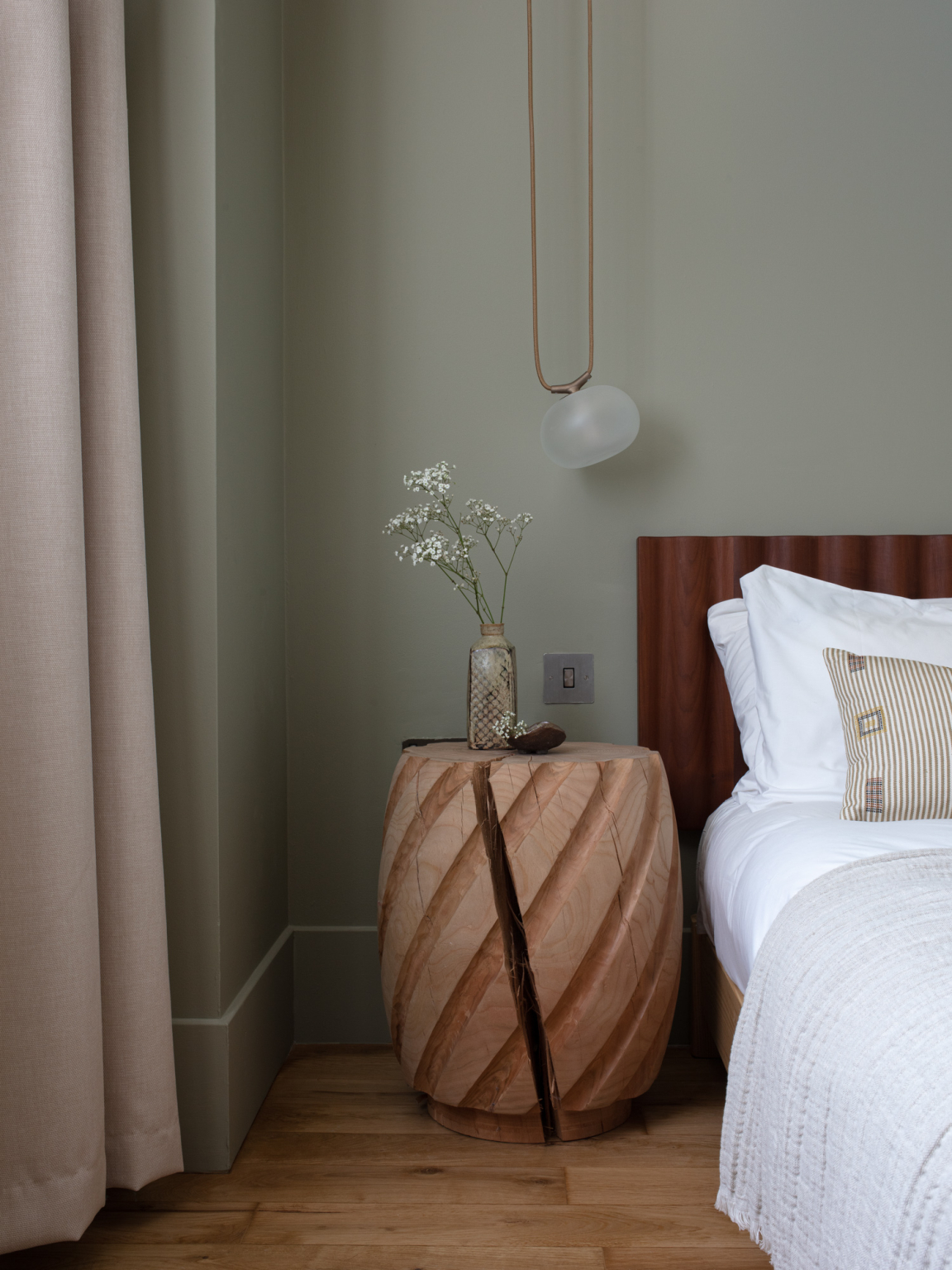
Bethnal Green Hotel. Photography credits: Fergus Coyle
What truly defines a new standard of craft in your opinion?
“For us, a new standard of craft is achieved in the pursuit of mastering your material, developing tried and trusted techniques of tradition, merging these with the ideas of digital techniques and applying that to projects that have narrative and explore current issues.”
And finally, what can we next expect to see from you?
“Our work is moving more and more between sculpture and furniture. With larger and larger chunks of timber coming into the workshop. We have a selection of projects coming out over the next six-months that celebrate the best of both worlds.
“From our recently launched Drumlin furniture collection based on the Irish landscape, a special seating commission of green timbers and reclaimed CLT panels from the Lore group, to following on from our One Hundred Shoreditch totem project.”
Be sure to catch the last month of the Harewood Biennial, before 20 October 2024. And to learn more about Jan Hendzel’s impressive portfolio of products and projects, click here.


